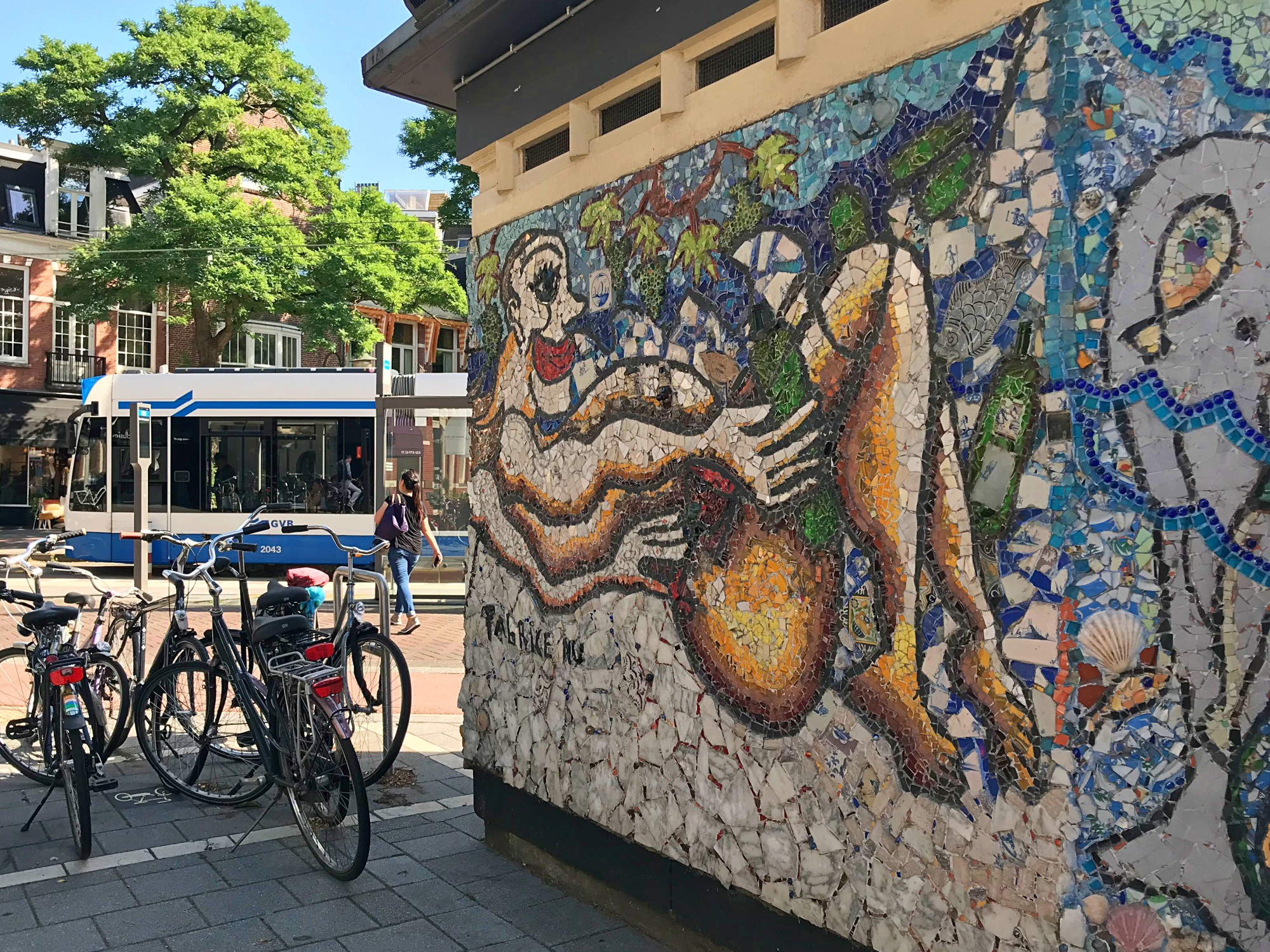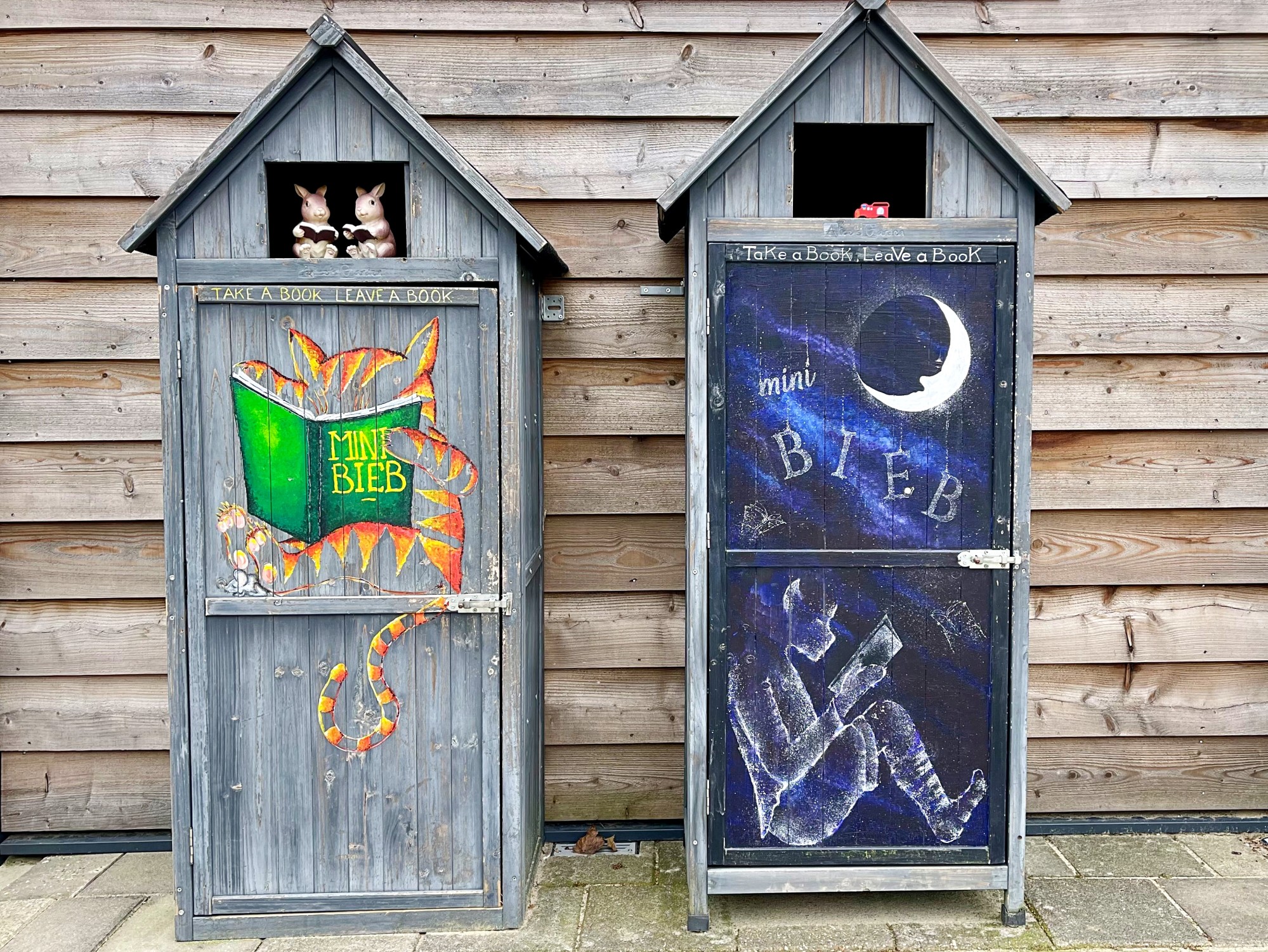4 quirky must-see Amsterdam icons, from flower bikes and gable stones to mosaic artist Fabrice Hünd’s works
Amsterdam is one of the world’s most visited cities, and is best known for the Van Gogh Museum, its red-light district, the I Amsterdam sign and its coffee shops that sell cannabis.
However, those who dig a little deeper will discover some more subtle features that help define the Dutch city. Here are some of the most interesting and quirky:
1. Flower bikes
Walk around Amsterdam’s city centre and pops of colour – bright “flower bikes” parked on canal bridges – greet you at regular intervals. The bicycles, decked out with fabric flowers and sequins, are the creation of Warren Gregory, an American and long-term resident of Amsterdam.

They have become particularly popular among TikTokers, Instagrammers and other social media users.
Gregory made the first flower bike for his wife, Michelle, nearly 20 years ago, but it was not just a romantic gesture. Michelle was suffering from short-term memory loss brought on by epilepsy. On a couple of occasions, she had complained about losing her bicycle.
In truth, she wasn’t able to locate her bike among the thousands just like it parked outside Amsterdam Central Station. By decorating her bike with fabric sunflowers, Gregory helped her spot it easily.
“I’m just a man in love with his wife, who found a way to help her,” he tells me.
In the process, Gregory created a Dutch quirk. He says he has created nearly 500 flower bikes to date, each uniquely decorated. About 100 can be found in Amsterdam; the rest are scattered across other Dutch cities and towns.

Now affectionately known as the Flower Bike Man, Gregory says he is grateful for the love and warmth he receives from the city. “That’s what keeps me going,” he says.
Gregory now receives orders from individuals, cafes and other small businesses, large corporations such as Heineken, and even museums; in June last year, he created a yellow bike draped in fabric sunflowers for the Van Gogh Museum’s 50th anniversary celebration.
“The requests for bikes keep my soul happy,” Gregory says.

2. The artworks of Fabrice Hünd
Love is also what motivated the late Dutch visual artist Fabrice Hünd (1961-2021) when he created large, intricate artworks for Amsterdam’s public spaces.
“Fabrice’s work is very much about pure love and how we are all connected as beings,” says Alain-Celest de Buck, co-founder of the art studio Depart From.
In collaboration with the playful artist, de Buck’s studio developed Tour de Fabrice, a free guide (in Dutch) for people wanting to see Hünd’s artworks in the city.
The tour includes all six of Hünd’s mega-mosaics, three large paintings and a mixed media work.
Following the artist’s death in 2021, Depart From finalised the tour in consultation with Hünd’s partner and city authorities.

“Fabrice was loved by so many people,” de Buck says. “The tour keeps his work and memory alive.”
One of Hünd’s most visible works is titled The Compass – a mega-mosaic in the Marie Heinekenplein square, a five-minute walk from the Albert Cuyp Market.
“With each mosaic, Fabrice celebrated the city’s spirit while challenging societal norms,” says de Buck. “He advocated for its preservation amidst rapid development.”
Hünd, a prolific artist who drew, painted and created sculptures in his studio for decades, initiated most of his public works.
Thanks to the fluidity in his mosaic creations, his style came to be known as “painting with shards”. He used pieces of ceramic, stone, glass beads, marbles and other recycled materials, often donated by residents who were interested in supporting his work.
De Buck believes Hünd did not receive the recognition he deserved when he was alive, but says: “His legacy lives on through the enduring presence of his mosaics.”

3. Gable stones
Amsterdam’s gable stones are the reason visitors need to look up more while exploring – at least, while in the historic city centre.
Gable stones – known as gevelsteen in Dutch – are carved and colourfully painted tablets made of natural stone that are set in the wall of a building a considerable height from the ground. Prior to the 19th century, when Amsterdam did not have a house numbering system, they were used to identify houses.
Each plaque would depict an item or a scene that was a reference to the house owner’s name or trade, or perhaps reflected the building owner’s religious beliefs or political convictions.
According to Josef Otten, chairman of the Association of Friends of Amsterdam’s Gable Stones, the Biblical story of Noah’s Ark was a popular theme.
This may have been because of its religious significance, but it could have been because Noah is the first person in the Bible to get intoxicated. Hence a Noah’s Ark gable stone could have indicated that the building it was attached to was a public house.

Gable stones were also essential for registering the purchase or sale of a house or building. According to Otten, the mention of a building called The White Dog in a transfer deed dating back to 1456 is the earliest mention of this practice.
The non-profit has documented more than 1,000 gable stones to date, about 700 of which are in public spaces. In addition to documenting their back stories, the 33-year-old association restores discoloured and damaged gable stones.
Otten recommends visiting Zeedijk to see the Black Drinking Horn – the oldest publicly visible gable stone in the city. It dates back to 1490 and was most likely the sign of a tavern.

4. Mini-libraries
A mini-bieb, or mini-library, is a common sight in many residential neighbourhoods of Amsterdam.
They usually consist of some sort of wooden or metal structure located in a public space containing an assortment of books, which people can borrow at no charge and return when they have finished reading them.
“It’s such a lovely neighbourhood initiative,” says Amsterdam-resident Enkiri Bloem. “It’s free and a good way to recycle books.”
Bloem is the co-creator of the Instagram account Bieb Hunters of Amsterdam, which reached a milestone recently with a post about the 800th mini-library the account has documented in the city.
The term “mini-bieb” stems from the Dutch word for library, bibliotheek. As seen in the Instagram account, each of these mini-libraries is unique.
Some people are being really creative to make their neighbourhood a little more beautiful and friendlier
Some are handmade and ornate while others are standard Ikea bookcases. Some are colourful and quirky, others plain and unremarkable.
The common threads are a love of books and reading, and the fostering of a sense of community.
In the hip Noord neighbourhood, a small boat has been converted into a mini-library. In the same neighborhood is Saint George and the Dragon, a work of art made from recycled materials that serves the same purpose.
In the Jordaan neighbourhood, in the western part of the city, a phone booth has been converted into a mini-bieb, and on the outskirts of Amsterdam, an antique grandfather clock has been repurposed as a repository for books.
“Some people are being really creative to make their neighbourhood a little more beautiful and friendlier,” Bloem says.

